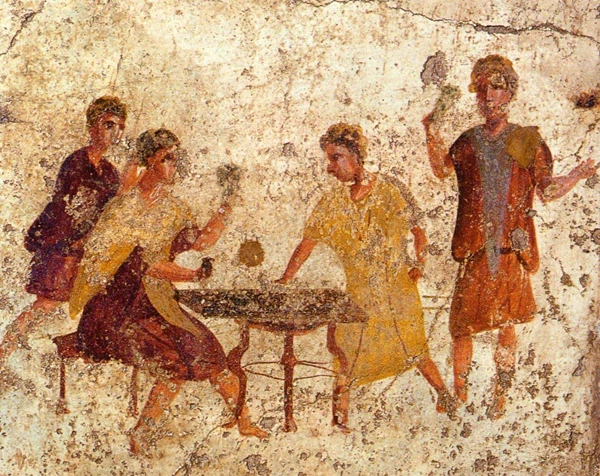DECEMBER 14, 2022 – With less than two weeks before Christmas, I’m well into my annual panic over what to buy my spouse. My panic increases each time I see under the tree, another present bearing the tag, “To Eric.” I wanted to write about this panic phenomenon, but in researching the origins of the whole gift-giving tradition, I wound up deep in history. My “travels” altered the course of this post. Here goes . . .
My basic question was, “Did Christmas gift-giving originate with Melchior, Caspar and Balthazar bringing gold, frankincense and myrrh from ‘parts East’ to the stable in Bethlehem?” This explanation seemed too simple. Surely there was more to the story.
For starters, long before Christianity came along, the Romans celebrated the festival of Saturnalia—in honor of . . . you guessed it, Saturn, goddess of agriculture. The big party was held between December 17 and December 23, and involved, among other traditions, the practice of exchanging gifts. After Constantine’s conversion in 312 C.E., after which Christianity became the official religion of the Empire, the authorities encouraged a continuation of the gift-giving routine so as to help mollify the masses. It fit conveniently with the Christian story of the three, gift-bearing Wise Guys.
Bolstering the Wise Guy formula was Nikalaos (“Nicholas”), a Greek bishop from Myra in what is now Turkey and a contemporary of Emperor Constantine. The good bishop developed a reputation for handing out gifts—not as bribes but as tokens of his generous spirit. He was eventually canonized, and over time, of course, St. Nicholas was worked into European folklore as “Saint Nick.”
So far so good. Now fast forward to Massachusetts Bay Colony in the first half of the 17th century. On the heels of the Pilgrims came the Puritans, a group of “extreme Evangelicals,” to use the modern description of an old phenomenon. The Puritans were, well, puritanical about a lot of things, including making merry and all that went with it—lights, decorations, singing, dancing and such nonsense as exchanging gifts. In other words, the Puritans outlawed Christmas, an action that makes a person wonder: How would modern Evangelicals (and the rightwing politicians they support) react if informed that their religious forebears not only ripped “Christ” out of “Christmas” but threw the whole damn thing into the dumpster?
In the year of the Declaration of Independence, three-quarters of the population of New England were Puritan. This didn’t hold much promise for the celebration of Christmas, let alone future December pilgrimages to retail malls across what would become (and become of) America.
What surprised me most in the course of my investigation was that Christmas wasn’t an official federal holiday until 1870. The gift-giving business didn’t become a retailer’s bonanza until well into the 20th century, and surprise, surprise, it was primarily “a thing” in American, birthplace of steroidal consumerism. With the “evergreen” overlay, it didn’t take long for the full-on secularization of Christmas—and return to the holiday’s largely pagan roots.
Moral of the “Christmas story”: stick around long enough, and you eventually wind up where you started.
(Remember to subscribe to this blog and receive notifications of new posts by email.)
© 2022 by Eric Nilsson
